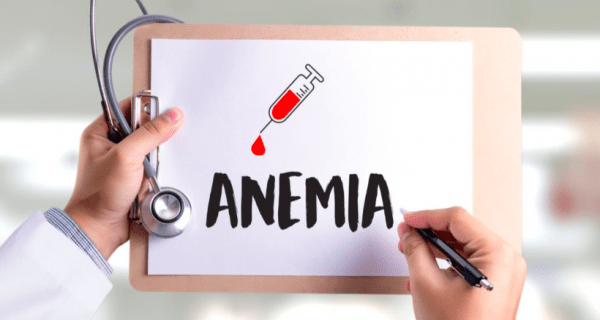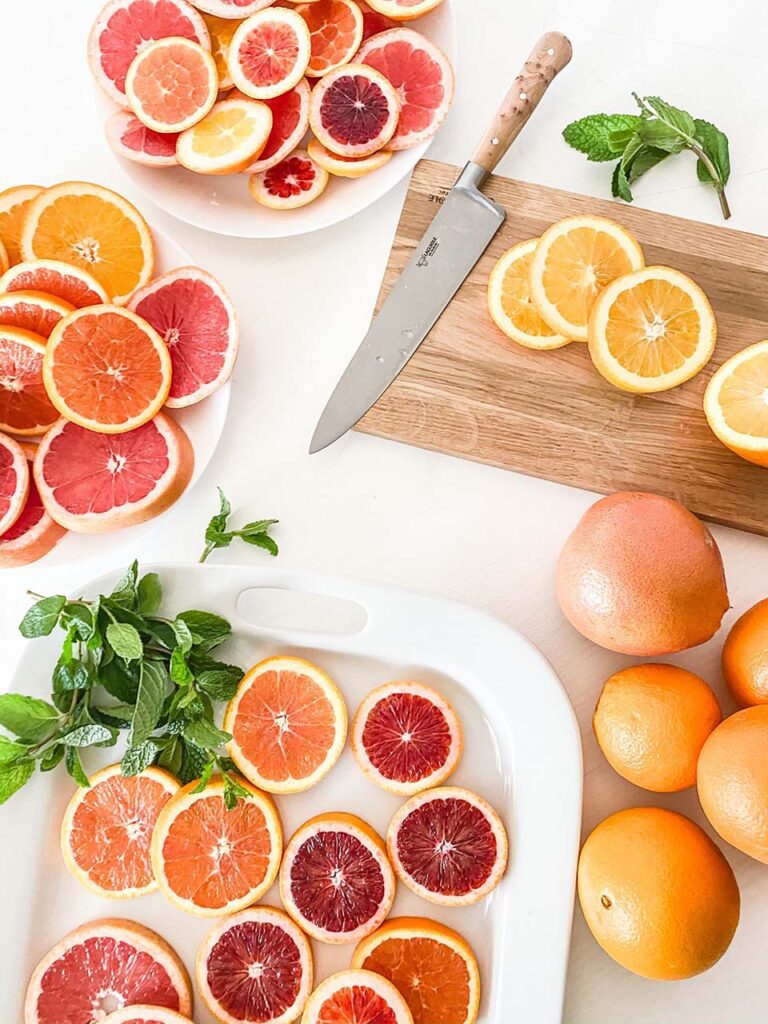Anaemia affects over 800 million women worldwide. In India, it is classified as a major public health problem as it is estimated that 52% of nonpregnant women of reproductive age are anaemic.
The primary cause of anaemia is iron-deficiency, it is seldom present in isolation but more frequently it coexists with a number of other causes, such as malaria, parasitic infection, nutritional deficiencies, and haemoglobinopathies.
Iron-deficiency also has important consequences for the future generations, as iron-deficiency anaemia increases the risk for preterm labour, low birth weight, infant mortality and predicts iron-deficiency in infants after 4 months of age.

Anaemia occurs when you have a decreased level of haemoglobin in your red blood cells (RBCs). Haemoglobin is the protein in your RBCs that is responsible for carrying oxygen to your tissues.
Iron deficiency anaemia is the most common type of anaemia, and it occurs when your body doesn’t have enough of the mineral iron. Your body needs iron to make hemoglobin. When there isn’t enough iron in your bloodstream, the rest of your body can’t get the amount of oxygen it needs.
Symptoms:
The symptoms of moderate to severe iron deficiency anemia include:
General Fatigue
Weakness
Pale Skin
Shortness of breath
Dizziness
Strange cravings to eat items that aren’t food, such as dirt, ice, or clay
A tingling or crawling feeling in the legs
Tongue swelling or soreness
Cold hands and feet
Fast or irregular heart beat
Brittle nails
Frequent headaches

Laboratory tests are needed to confirm IDA. Typical findings are low serum iron and ferritin levels and a high total iron binding capacity or TIBC, which is an indication that iron receptors are very sensitive and are ready to receive iron to incorporate into the cell.
So, how does one get IDA? Iron deficiency happens when there is a prolonged negative iron balance or dietary iron intake does not meet the physiological needs of the body. In less industrialized nations, nutritional intake has a high impact on iron deficiency.
When the diet is limited in meats, fresh fruit and vegetables, or is high in substances that form complexes with iron, this may lead to an iron deficiency. There are also many mal-absorptive syndromes that may cause IDA.
Situations that increase the demand for iron are frequent blood donations, menstruation, participating in endurance sports, pregnancy and lactation, infancy and adolescence. Blood loss is another important cause of IDA. This can result from many disorders, including hemorrhoids, copious menstrual flow, peptic ulcers and postpartum bleeding as a few examples.
Treatment
Nutritional strategies-
Food-based strategies to address iron-deficiency among Indians include consumer education to encourage diversification of the diet to include iron-rich foods, improving popularity and consumer accessibility to foods and fruits that contain vitamin C, which enhances iron absorption.
Also, behaviour modification to encourage people to avoid consuming tea with meals as tea may interfere with iron absorption. An iron-rich food source worth promoting is millet (Ragi), either as roti. Ragi has higher iron content than rice and maize, and less iron-inhibiting phytates than rice wheat and maize.
Nutritionists recommend that vegetarians need to increase dietary iron by 80% to compensate for a lower iron availability of 10% from a vegetarian diet compared with 18% from an omnivorous diet.
This recommendation constitutes a major challenge in India where the majority of vegetarians subsist on inadequate quantities of iron-poor staples such as lentils, wheat bread, green peppers, and rice.

Iron rich food items-
Tofu & Soya bean
Lentils
Beans-Red kidney beans, chick peas etc
Seeds-Pumpkin seeds, Flex Seeds, sesame seeds etc
Nuts- Almonds, Cashew & Pine nuts
Leafy Greens- Spinach, Kale, Beet greens, Indian leafy vegetables
Tomato
Mushrooms
Whole grains- Amaranth, Oats, Quinoa
Coconut milk

Iron Absorption –
The “haem” iron found in meat and animal products is generally more easily absorbed by the human body than the non-haem iron found in plants. For this reason, the recommended daily intake of iron is 1.8 times higher for vegetarians than those who eat meat.
However, there are various strategies that can be employed to increase the body’s ability to absorb non-hae miron. Here are the best-researched methods:
Eat vitamin C-rich foods: Consuming vitamin C-rich foods together with foods rich in non-heme iron may increase the absorption of iron by up to 300%.
Avoid coffee and tea with meals: Drinking coffee and tea with meals can reduce iron absorption by 50-90%.
Soak, sprout and ferment: Soaking, sprouting and fermenting grains and legumes can improve iron absorption by lowering the amount of phytates naturally present in these foods.
Use a cast iron pan: Foods prepared in a cast iron pan tend to provide two to three times more iron as those prepared in non-iron cookware.
Consume lysine-rich foods: Consuming plant foods like legumes and quinoa that are rich in the amino acid lysine together with your iron-rich meals may increase iron absorption.

Homeopathic Remedies for IDA
Ferrum Metallicum: Best Homeopathic medicine for Anaemia
The persons needing Ferrum Met are weak with paleness, and have frequent false flushing appearing at the slightest excitement. Vertigo, pulsating headaches and ringing in ears are also experienced by patients. Difficulty in breathing, shortness of breath with palpitations in heart are dominantly present in such patients, as is coldness of body.
Aletris Farinosa: Homeopathic medicine for anaemia in women with extreme fatigue
Aletris Farinosa is the best natural Homeopathic medicine for women suffering from Anaemia with extreme weakness and fatigue. There is a marked weariness and tiredness all day in such patients. The energy level seems to be markedly reduced and the body feels powerless. Frequent episodes of faintness and vertigo are common and even the face appears very pale. Anaemia in women due to repeated abortions is best treated with Homeopathic remedy Aletris Farinosa. Vaginal discharge due to Anaemia can also be corrected with this Homeopathic medicine.
China: one of the Best Homeopathic medicines for Anemia following excessive bleeding
Anaemia due to extreme blood loss is best treated with natural Homeopathic medicine China. The bleeding can be the result of a traumatic injury, excessive bleeding in periods or bleeding from any part of the body like throat, bowels, nose, etc. The person is exhausted and even fainting spells occur due to extreme anaemic conditions consequent to blood loss.
Natrum Mur: One of the best Homeopathic medicines for Anemia with weight loss
Natural Homeopathic medicine Natrum Mur acts very efficiently to control weight loss as a result of Anaemia. The person appears very lean and emaciated with loss of flesh. The headache due to Anaemia is also best treated with Natrum Mur. The headache is mainly bursting in character. Nausea and vomiting may accompany the pain in the head. Natrum Mur is also the Homeopathic cure when anaemic patients experience palpitations. Natrum Mur has a great ability to control palpitations due to decreased blood. Anaemia due to long standing grief is also best treated with Homeopathic remedy Natrum Mur. There is also a marked desire for extra salt in persons needing Natrum Mur to cure Anaemia.
Homeopathic medicine Ferrum Phos a haemoglobin enhancer
Ferrum Phos is the most frequently used natural Homeopathic medicine to increase the haemoglobin level. It can be safely used among people of all age groups. Even during Anaemia in pregnancy, Ferrum Phos is a safe Homeopathic remedy though the dosage is to be properly handled by the physician during pregnancy. The skin appears pale in persons needing Ferrum Phos and they also experience palpitation of heart and weakness.